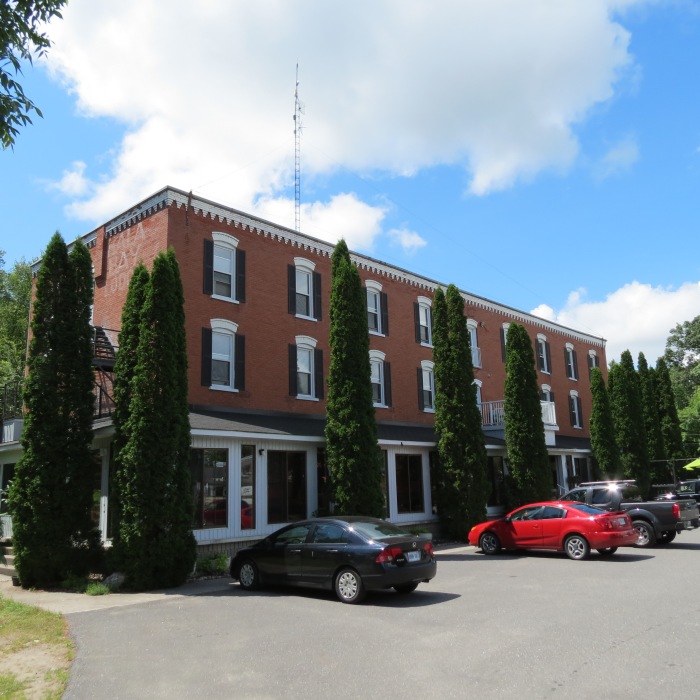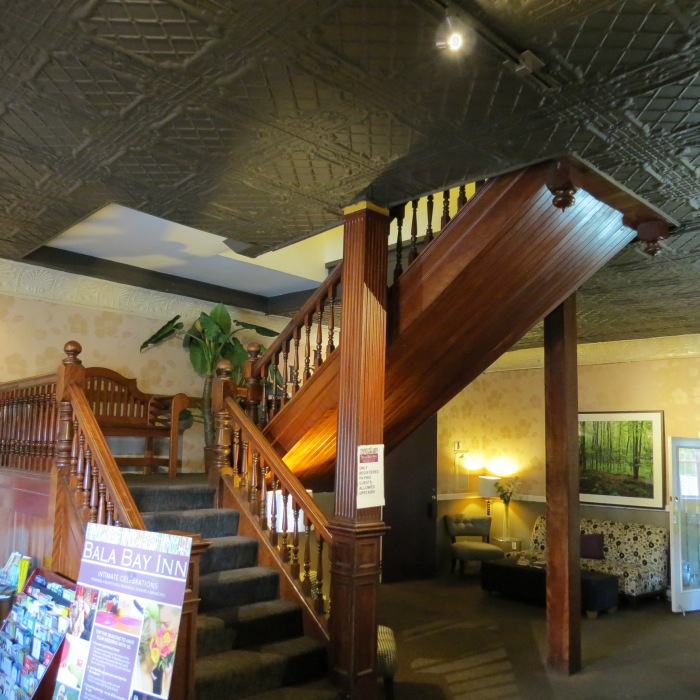Bala’s Cranberry Festival is just around the corner (October 12-14), an event that lures tens of thousands of visitors to this charming Muskoka village each October. The focal point of the festivities is, naturally enough, Johnston’s Cranberry Marsh, Ontario’s only commercial cranberry grower. But there’s another location that inevitably draws one’s attention, a historic building that has stood at the heart of the village for over a century: the Bala Bay Inn.

The Bala Bay Inn has a remarkable history. It was the first brick hotel in Muskoka, and in its time hosted such celebrated guests as American President Woodrow Wilson—very likely trying to negotiate a settlement that would stave off World War One—and big-band legend Louis Armstrong, a regular at Dunn’s Pavilion. Today, numerous features remain that speak to the rich history of the building in its heyday.
When built by E.B. Sutton, the Bala Bay Inn was called the Swastika Hotel. At the time, before it was corrupted by Adolf Hitler, the Swastika had been a symbol of luck and prosperity in numerous cultures dating back several millennia. In the 1930s, as the Nazi party rose to power and war seemed imminent, the owners changed the name of their hotel to Sutton Manor. If you look carefully at either end of the hotel facing the lake, you will still see a swastika just below the roofline. They have been painted over many times in an effort to disguise them, but they are still there as a link with the hotel’s past
Indeed, the hotel experienced its greatest prosperity during the time it was known as the Swastika. During the 1920s and 30s, it was a prosperous hotel frequented by wealthy patrons. “It was a really high class place where the well-to-do went for vacation,” recalled Vivian White, who as a young child went to the hotel with her family in the mid-1930s. “People dressed up for dinner, there was horseback riding and entertainment. It was a really nice place.”

Fortunes dipped after the name change, but nonetheless even today one finds a number of features hinting at the hotel’s prior grandeur.
Crane your neck within the dining room and lounge and you’ll see the original tin ceilings, a luxury that only the wealthy could afford. At the time, they would have been painted white to give the illusion of hand-carved or molded plaster. If you look carefully, you can still see small holes in the tin ceiling. Acetylene gas pipes were fed through them to light the hotel; in the absence of electricity, acetylene was the next best option as by the 1900s wealthy patrons would no longer find oil lamps acceptable. It was a dangerous novelty, however, as acetylene was highly combustible. Indeed, the neighboring Windsor Hotel burned down as the result of a gas explosion in August, 1909. The decision to build the inn out of bricks was an effort to safeguard against such a disaster and reassure guests.
Other reminders of the Inn’s glory days include the posted old rate schedule, sconces for oil lamps still visible on many walls, and aged pine floors and inviting pine bar within the bar room. There was much controversy when the beer parlour was opened in the late 1940s. When Sutton purchased the land upon which the hotel sits, one condition was that the inn would never serve alcohol. The Sutton’s faithfully stuck to this promise, but successors felt no such responsibility. The barroom was male only for decades; because it was unseemly to drink with members of the opposite sex in public, women had to drink in another room across the hotel (a room now known as The Ghost Lounge)
This lounge is aptly named. It was here that E.B. Sutton was laid in state for a number of days after his 1916 death, in a spot directly opposite the still-standing fireplace. Ever since, stories say it has been visited by spectral phenomenon.
The most impressive historic feature is undoubtedly the mahogany grand staircase leading from the lobby up to the second floor. Even a century later, the dark wood still inspires and exudes an aura of class and elegance. Looking at it, you can’t help but imagine women with long dresses gliding regally down the stairs, hems brushing against the carpet with an airy rustle.

Even after more than 100 years, the Bala Bay Inn still has her secrets to share. She keeps them closely guarded, but they’re there if you know where to look. And who knows? Perhaps further secrets await discovery.
For more information on the Bala Bay Inn, see my book Muskoka: Enchanting Stories of Ontario’s Cottage Country. For more information on the Cranberry Festival, go to www.balacranberryfestival.on.ca.


